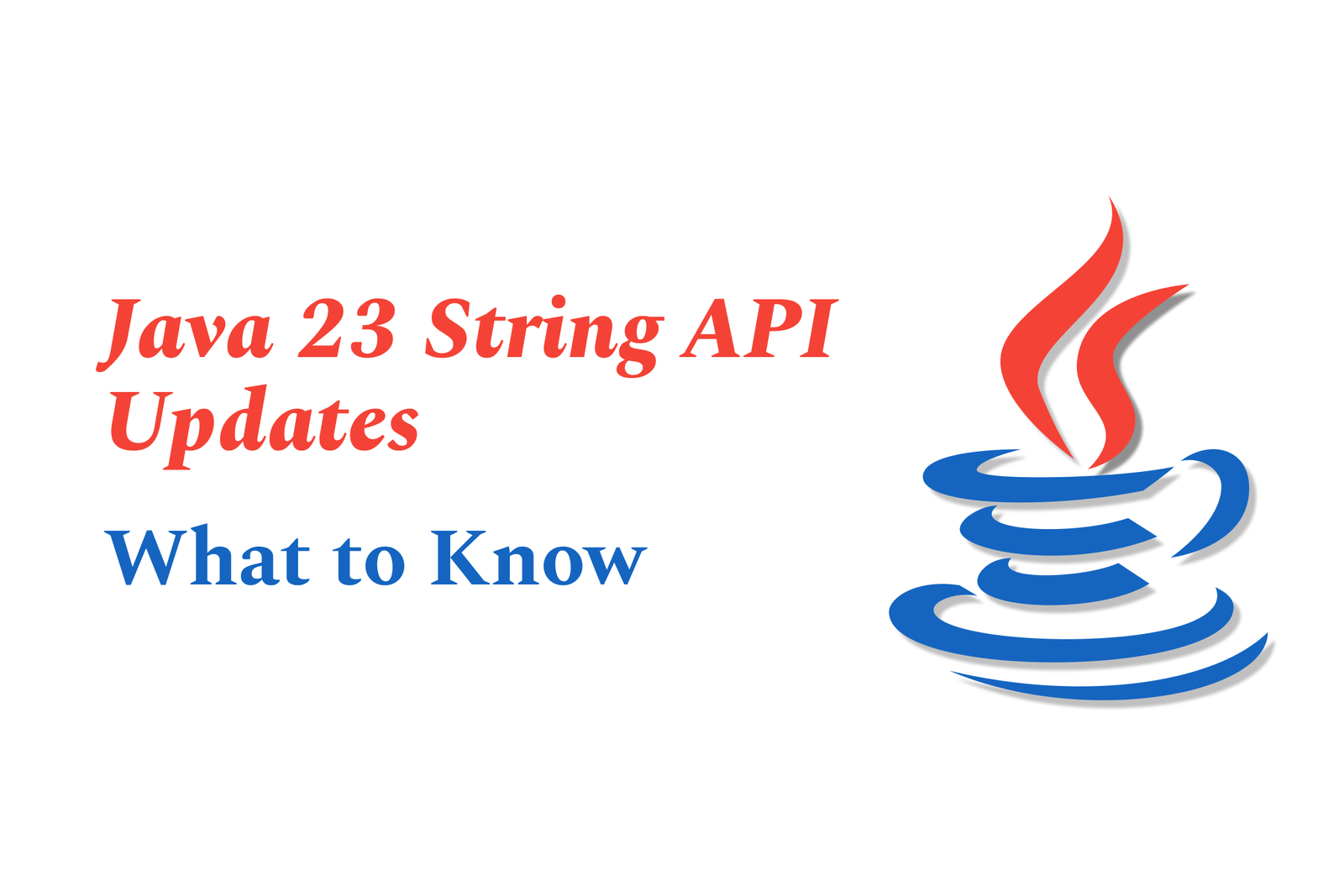Java 23 String API Updates: What To Know
Java 23 String API updates focus on refining existing string handling without introducing the anticipated String Template feature, which was removed from this release. Developers should rely on the mature String API and prepare for future enhancements by enabling preview features in their tools.
Java 23 String API Updates: What to Know
1 ) No String Template Feature in JDK 23
One major takeaway for Java 23 is the explicit removal of the String Template feature; it will not be available even as a preview feature.
This decision reflects a careful stance by the OpenJDK team, prioritizing quality and readiness over adhering to a predefined schedule.
Developers who experimented deeply with string templates had to manually update numerous instances in their codebases, but broadly accepted the decision as healthy for the platform’s long term evolution.
2 ) String Class Overview in Java 23
The String class remains a fundamental, immutable sequence of characters.
Java strings are UTF 16 encoded and manage supplementary characters through surrogate pairs.
The API includes a comprehensive set of methods for string manipulation such as searching, comparison, transformation, and locale sensitive casing.
Despite no new template features, the extensive existing String API continues to provide robust tools for handling strings effectively in Java 23.
3 ) Using Preview Features in Java with IntelliJ IDEA
Although unrelated to String API per se, working with Java 23 and recent versions requires understanding how to enable preview language features.
For example, to use preview APIs like structured concurrency in Java 21 and beyond, developers must enable preview flags both in module settings and runtime configurations.
Within IntelliJ IDEA, this involves setting the SDK and language level to experimental, plus adding the ` enable preview` flag in both compiler and VM options.
Proper setup ensures smooth development experiences with the latest Java features, including upcoming or experimental string handling capabilities.
4 ) Implications for Java Developers
Java developers should prepare for the absence of string templates in JDK 23 and adjust codebases accordingly.
They can rely on the mature and extensive existing String API to implement string manipulation needs.
Staying updated on how to work with preview features in development tools like IntelliJ IDEA will be crucial for exploring and adopting new Java language improvements as they emerge.
https://justacademy.in/news-detail/is-react-native-still-competitive-with-flutter?
https://justacademy.in/news-detail/how-java-is-powering-iot-development-in-2025
https://justacademy.in/news-detail/react-native?s-new-styling-system-explained
https://justacademy.in/news-detail/flutter-in-fintech-app-development
https://justacademy.in/news-detail/java-concurrency-utilities:-new-features-and-fixes
Related Posts
In 2025, top Angular libraries offer modern, feature-rich components and tools for building dynamic web apps. From powerful data grids to low-code platforms like UI Bakery, these libraries enhance development speed, UI design, and scalability, making them essential for Angular developers.
Migrating from AngularJS to Angular 17 involves gradually upgrading your app by running both frameworks together using tools like ngUpgrade, rewriting components in TypeScript, and adopting Angular’s modern architecture to enhance performance, maintainability, and long-term support.
Angular state management tools help organize and handle app data efficiently, improving scalability and maintainability. Popular options include NgRx for robust, RxJS-based patterns, and newer Signal Store solutions that offer simpler, reactive approaches integrated tightly with Angular’s latest features.
RxJS in Angular empowers developers to manage asynchronous data streams with powerful operators like `forkJoin`, `combineLatest`, and `zip`. Mastering these key operators in 2025 is essential for building efficient, reactive applications that handle complex event sequences seamlessly.
Angular performance optimization in 2025 focuses on improving app speed and responsiveness by using techniques like OnPush change detection, lazy loading, efficient data caching, and AOT compilation. These practices reduce load times, enhance user experience, and ensure scalable, fast Angular applications.
In 2025, Angular remains preferred for large-scale, enterprise apps with its robust, all-in-one framework, while Vue attracts developers seeking simplicity and fast development for smaller projects. Both frameworks excel, with choice driven by project needs and team expertise.
Angular Signals are a new reactive primitive in Angular 16 that enable fine-grained, efficient change detection by automatically tracking dependencies and updating only affected parts of the UI. They simplify state management and boost app performance, revolutionizing Angular's reactivity model.
Angular interview questions to prepare in 2025 focus on core concepts like components, directives, data binding, routing, and dependency injection, along with TypeScript mastery and latest Angular features to ensure strong practical knowledge for building scalable, efficient web applications.
AngularJS reached its official end of support in January 2022, meaning no further updates or security patches. To ensure app security and performance, developers should consider migrating to modern Angular versions or seek third-party long-term support options if immediate migration isn’t possible.
The Angular Roadmap 2025 highlights upcoming features focused on improving developer experience and performance, including zoneless Angular, Signals integration, enhanced Forms, async data handling, improved HMR, and expanded Angular Material/CDK enhancements, driving modern, efficient web app development.










